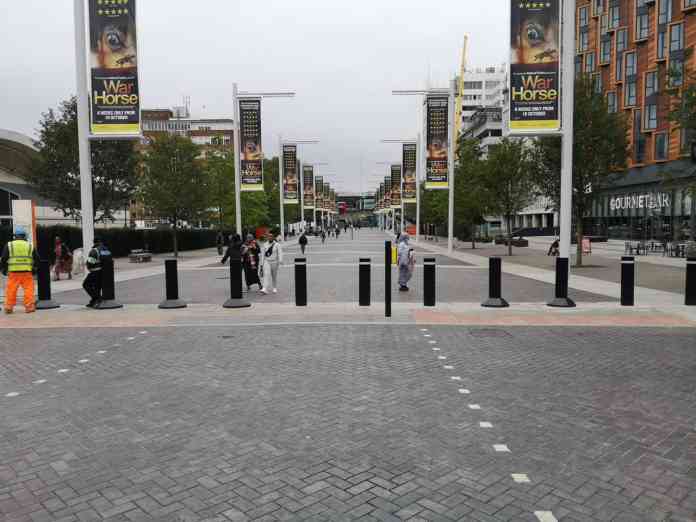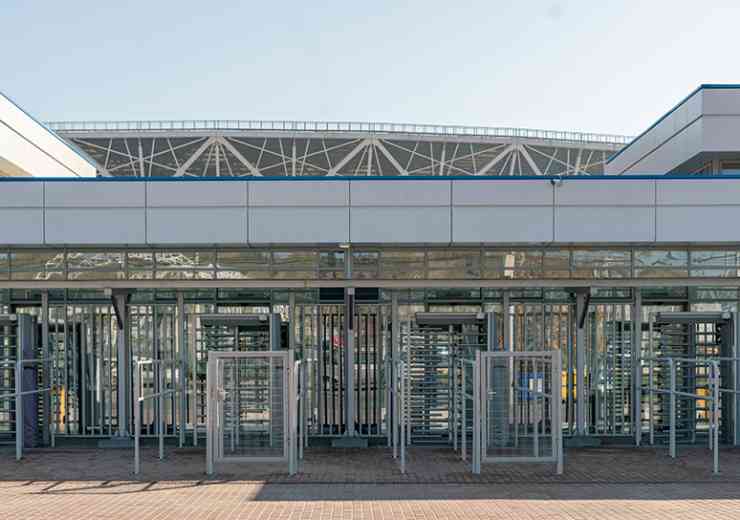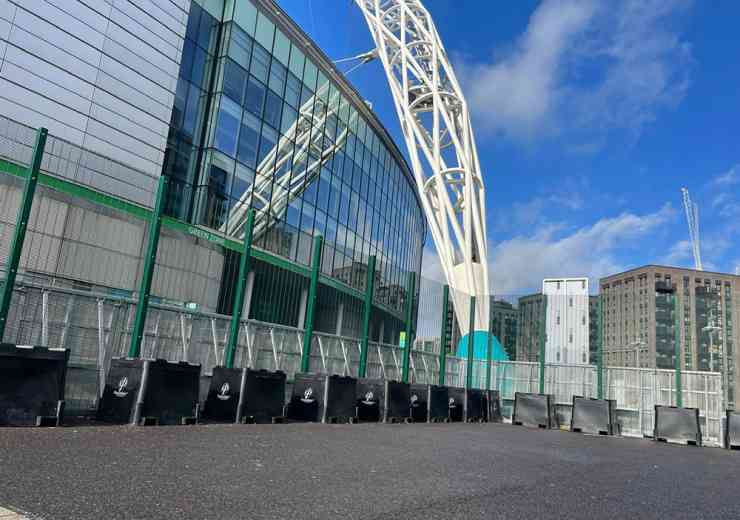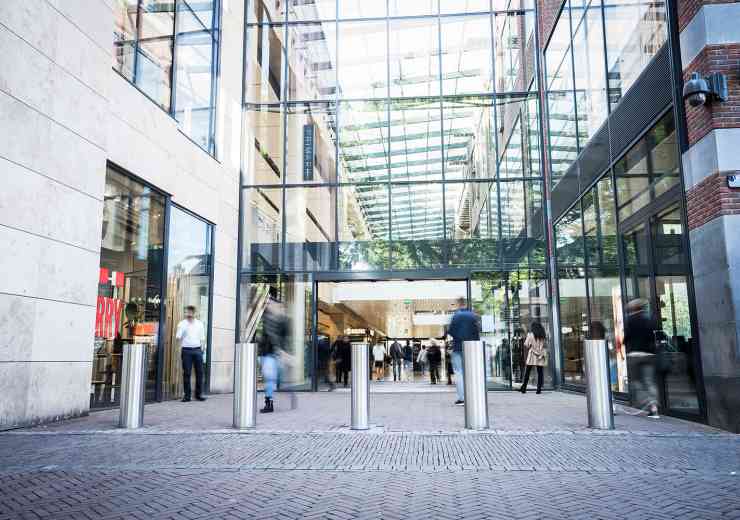
The security risks of lockdown measures
On behalf of the Perimeter Security Suppliers Association, Debbie Heald explains why pedestrian security must be top of the agenda if towns and cities want to recover from Covid-19
Throughout most of the lockdown, we’ve been encouraged to meet outdoors to minimise the spread of the Covid-19 virus. Businesses have been impacted by having to restrict the number of people they can have on their premises, and pop up pedestrianised areas have also been implemented across towns and city centres to allow businesses to service their customers outside and those commuting by foot or bike to do so safely.
At the outbreak of the pandemic, lengthy queues outside supermarkets and other essential shops were a regular sight. Months down the line we continue to see queues outside of shops, both on the high street and out of town shopping centres, and with increasing rates of infection and local lockdowns, it’s likely to continue for some while longer. The White Rose in Leeds, for example, has closed one of its car parks to create a one-way system for its visitors to its Primark store, with those looking to enter having to queue outside in the car park.
On the other hand, many individuals are enjoying the opportunity to visit their favourite coffee shop, bar or restaurant and having the chance to sit outside watching the world go by. It represents a lifestyle most often found on the continent, allowing those of us who haven’t had a foreign holiday this year to have a taste of what we’re missing.
More recently, curfews imposed on bars and restaurants have sprung up challenges with an increased footfall on the streets at closing time, leading to concerns that it could cause more harm than good.
While these measures might help to stop the spread of Covid-19, it presents an ideal opportunity for those looking to commit crimes using a vehicle as a weapon.
Although the most recent UK vehicle-related terror attack happened back in 2018, there has been a spate on localised crimes in which vehicles have been used to cause injury and even death. In contrast, in the USA, reports are indicating that there have been 104 separate vehicle attacks taking place since 27 May 2020 as scores of protests take place. With tensions around how the UK and members of the public are handling the pandemic, it is likely that it won’t be long before we see vehicles being used as a weapon on the rise once again.
The future face of the high street
While many cities and town centres have already implemented measures to secure visitors in the wake of a rise in vehicle attacks in recent years, some still have a long way to go to ensure adequate security measures are in place.
To support the economic recovery of our towns and cities, councils are going to have to enhance how outdoor spaces are used to attract visitors, who in turn spend money on local high streets if they want to prevent businesses closing down and further job losses. An Arts Council England report titled Arts and Place Shaping: Evidence Review points to growing evidence that demonstrates cultures' role in revitalising the high street by promoting social cohesion and supporting local economies in towns, cities and villages throughout the country.
Culture Secretary Oliver Dowden said: “These reports prove what we already know to be true, that culture is at the heart of our towns and cities. It creates jobs and makes our local communities across the country better places to live, work and visit.
Several councils already had ideas like this in mind before the outbreak of the Pandemic, with Kirklees Council, for example, outlining plans for a Cultural Quarter in the town centre of Huddersfield, something which it anticipates will be a catalyst for change in the town by acting as a cultural heart where families, visitors and residents can congregate and enjoy leisure, arts and music with the ambition of attracting more people into the town centre.
Leeds City Council has also put out calls for expertise to transform Leeds City Square to make the city more dynamic and inclusive as part of the councils Our Spaces strategy to transform and create world-class inclusive spaces across Leeds which contribute to an improvement in the health and well-being of its residents along with attracting visitors to the area.
If councils want to protect businesses and jobs in their areas, these are changes that are going to need to be driven through quickly to minimise the broader casualties of this virus. At the same time, pedestrian safety can not be overlooked.
Effective security measures
The way we live and work is likely to speed up the pedestrianisation of town centres, with it already being reported that bike sales are up 60% as a result of the pandemic according to the research firm, Mintel. It’s therefore vital that not only towns and city centres but the commuter routes leading to them have the required security measures in place if a revival of town centres is to be seen.
One of the biggest challenges, however, is retrospectively securing locations without it impacting on the aesthetics of the area.
While some councils have acted quickly to put in place security measures, in some instances, these are ones that should only be in place temporarily or are not effectively crash tested. Plastic or metal barriers separating vehicles from pedestrians or cyclists are most likely to create a false sense of security, but if impacted can result in more disastrous consequences than if the measures weren’t there in the first place.
On social media, a video has been circulating of a driver in Brighton intentionally driving through ‘wands’ implemented to create a cycle lane. While the driver didn’t collide with a cyclist, the outcome could have been very different and does not instil confidence in those who might wish to switch to cycling for commuting or leisure purposes.
Ineffective and garish security bollards are also unnecessary, especially when there are many on the market which can blend in with their surroundings, or can be customised to do so. As individuals have to adapt to the use of face masks and other restrictions, the last thing people want to see is security measures which can further heighten fears about the challenges faced in our modern-day society.
When it comes to security measures in the public realm, they should be unobtrusive, allowing individuals to go about their business with little acknowledgement that these measures are in place.
Enabling access
Another consideration is whether or not the perimeters being secured allow access to permitted vehicles. While effectively securing a perimeter is vital, access may still be required by delivery vehicles and emergency services. Often town cities adopt temporary measures which cannot meet these needs, potentially leading to unforeseen consequences on local businesses and if an emergency was to happen within the perimeter being secured.
From conversations with town planners and security professions, often the issue holding back the implementation of sufficient security measures is existing underground infrastructure. But over the last few years, manufacturers have developed innovative security measures which require little, if any excavation, while still offering a crash-tested solution.
While the rest of the year and even 2021 is set to be a challenge for many, I hope to see our towns and cities thriving again, with outdoor events, concerts and arts helping to bring people back together after what has been almost a year of keeping our distance.
















